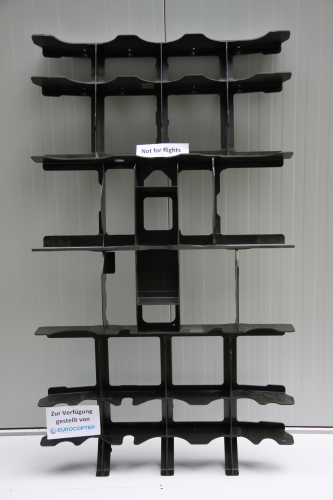
Thomas Klimpl, Sales Engineer at WICKERT Maschinenbau GmbH, Germany
In general, we can distinguish between two main industries in the composites sector that are also essentially developing differently. One is the aerospace industry and the other is the automotive industry.
The new models from the two major aircraft manufacturers Boeing and Airbus have enabled the successful use of composite materials in series airplane production. In general, we see very good chances for the future here due to the low number of components to be manufactured in comparison to the automotive industry.
| With regard to the automotive industry, we see that a few automobile manufacturers have focused very intently on composite materials. As things stand today, however, we do not think that the new material will be as successful here as in the aviation industry. |
Airplane structures can be successfully converted from other materials to composite materials. But here it should also be kept in mind that the special wide-bodied aircraft have a very long service life, and the new materials still have a long way to go before they reach this level. Long-term experience with the new materials used in the new models from the two aircraft manufacturers during the next 30-40 years will show the extent to which composite materials will be able to establish themselves in the future.
With regard to the automotive industry, we see that a few automobile manufacturers have focused very intently on composite materials. As things stand today, however, we do not think that the new material will be as successful here as in the aviation industry. Right now, the manufacturing technologies are still not at the level that the automotive industry demands. In addition, energy efficiency advantages are nullified by the high costs for the material and for component manufacturing.
Our opinion today is that the market in the automotive sector will develop in the direction of hybrid construction combining lightweight metals and composite materials. Given the fact that the geometric parameters of a steel component cannot be transferred 1:1 to a composite component, our view is that there is still not enough experience here in the area of designing with composite components.
Automation and process solutions
In the aerospace sector, which even today is still more reminiscent of a cottage industry, advantages could be swiftly generated by simple automation and process solutions that Wickert is developing for its customers.
While there is also a push to achieve this in the automotive sector with automation, matters are disproportionately more difficult. Here, Wickert is working with its partners to develop complete solutions that are the most efficient for the particular need in the interaction of machine automation and acquisition and production costs.
COMPOSITES EUROPE highlights
As the highlight at COMPOSITES EUROPE 2013, Wickert will be presenting various projects and components from the product family of the new Airbus A350, as well as several large projects that have been implemented in the area of composite materials. This is intended to emphasise the uniqueness of the individual projects in industry. Wickert would like to compete for these highly individualised customer solutions. ♦
Also see:
If your company is exhibiting at COMPOSITES EUROPE 2013 and you would like to be included in our Industry Challenges series, please contact Reinforced Plastics' Editor, Amanda Jacob.






